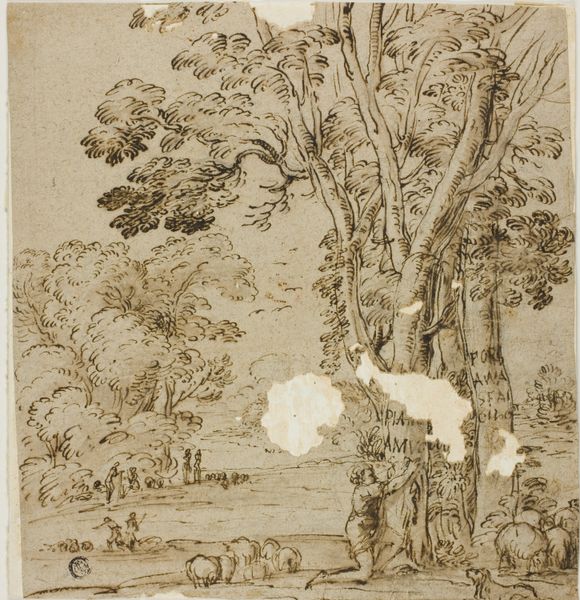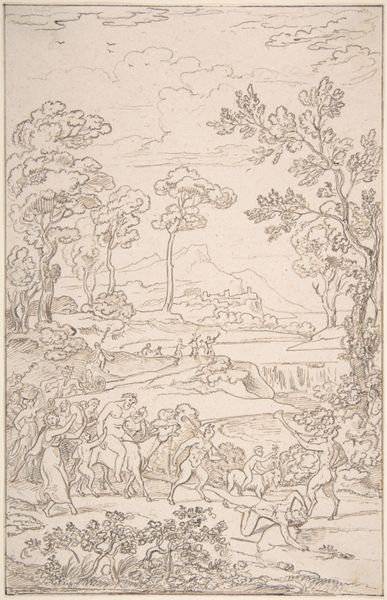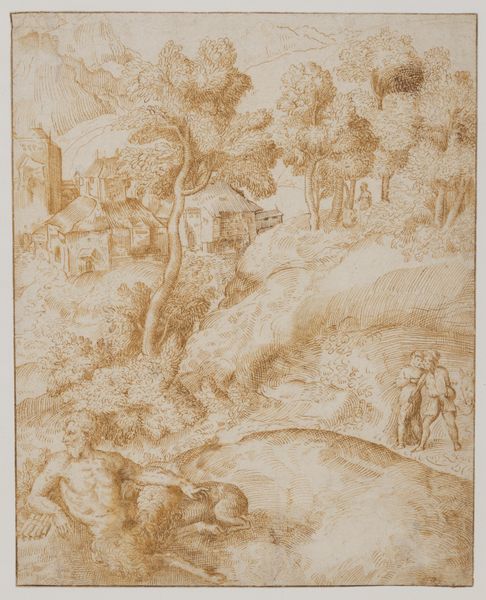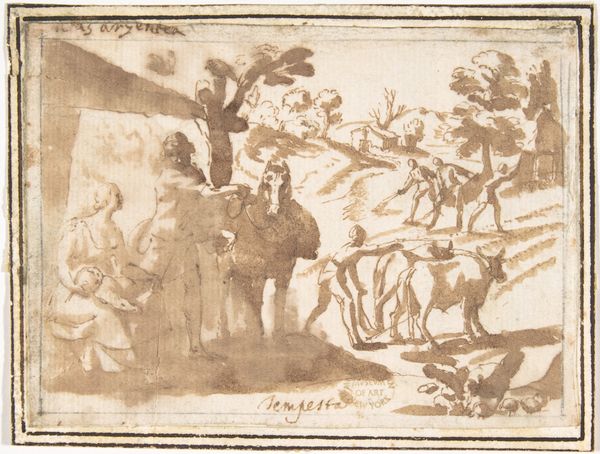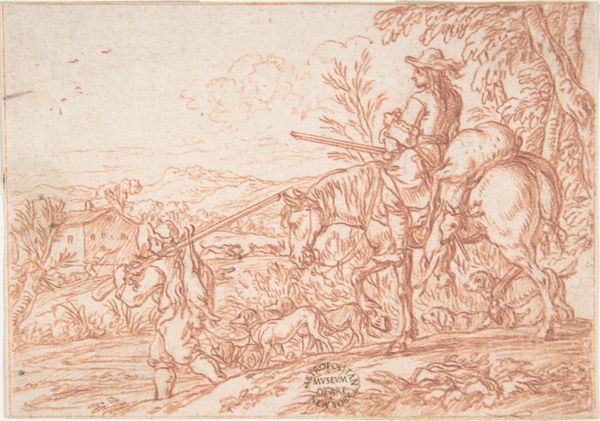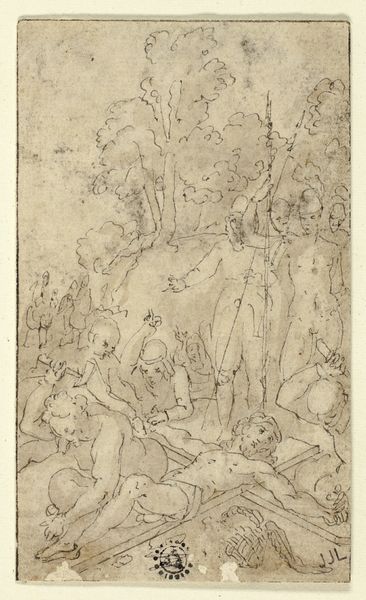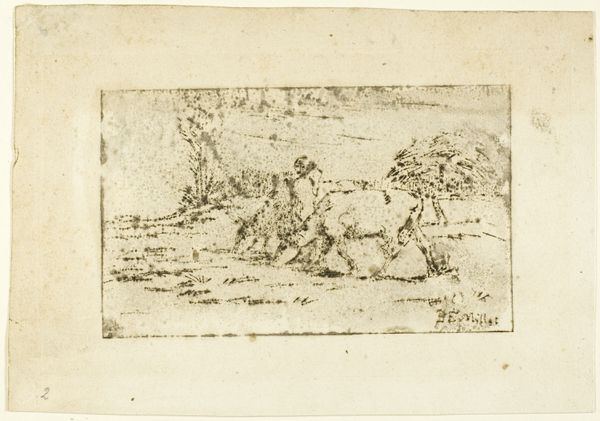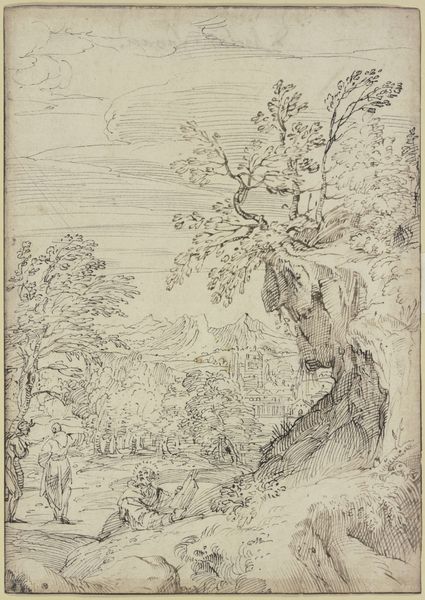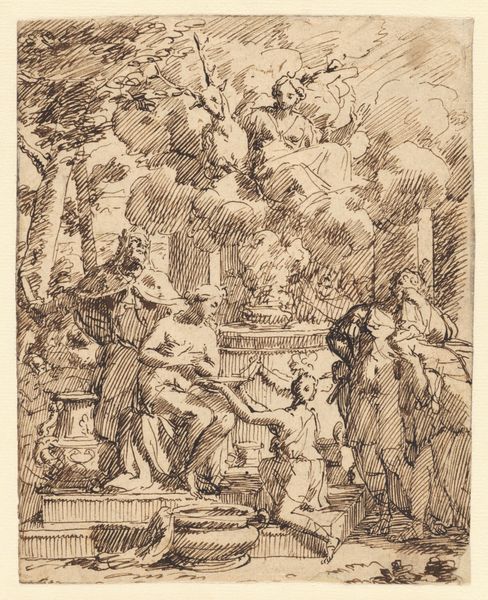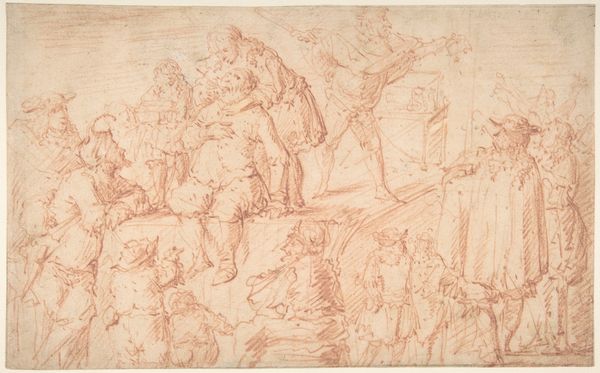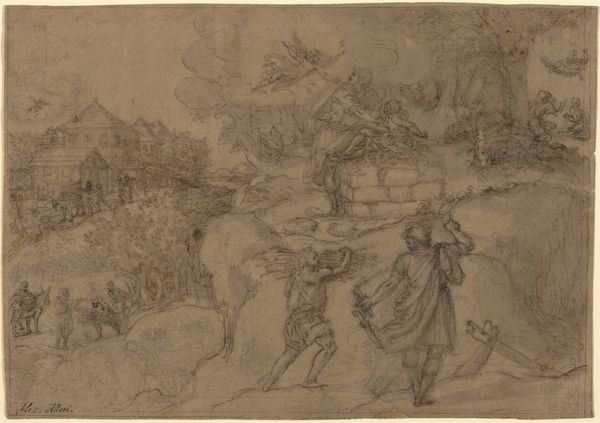
Recto: Landscape with Trees and Figures (? Remarks on the Winds and the Lay-out of the City; Vitruvius, Book 1, Chapter 6, nos. 2, 3): Verso: Blank. 1530 - 1545
0:00
0:00
drawing, ink
#
drawing
#
landscape
#
figuration
#
11_renaissance
#
ink
#
history-painting
#
italian-renaissance
Dimensions: sheet: 6 5/16 x 5 1/2 in. (16 x 14 cm)
Copyright: Public Domain
Curator: This is a drawing from the Sangallo family workshop, created sometime between 1530 and 1545. The artwork, held at the Metropolitan Museum of Art, is rendered in ink and shows a landscape with trees and figures. On the page, there are also notes from Vitruvius regarding city planning and the wind. Editor: The scene has a strange dynamism. The sketchy style makes it look like everything's in motion—figures running, trees swaying. The line quality makes the clouds appear almost like spirits looking down on us. Curator: Indeed. Consider the visual vocabulary here. The trees, for example, are not just natural elements, but archetypal representations of shelter, wisdom, and growth, which carries the deeper cultural significance tied to Renaissance-era landscape imagery. The very wind being recorded may be connected with the astrological concept of 'Temperament.' Editor: Yes, and those running figures feel staged almost like a theatrical composition and yet this composition gives off a violent atmosphere! Perhaps what's significant here is what remains concealed. The figures running are white; I wonder about the social underpinnings and race dynamics inherent in Renaissance Italian society, particularly concerning the lower classes and how such landscapes are linked with labor relations and societal marginalization. Curator: An excellent point, which expands on the artist's choice to emphasize the scene's emotional tonality by manipulating the flow of visual information, leading our eyes across the drawing. It is interesting that there are barely any lines, as it contributes to the open air and lack of constriction. Editor: That artistic handling makes this an early expression of climate change awareness, an articulation of how human actions—in city layouts and architectural planning—shape the winds, shape our experience, shape our understanding. Perhaps by seeing this early concern we can better acknowledge our social responsibility toward nature, towards humanity. Curator: Very compelling perspectives, it opens interesting questions of seeing nature within the framework of society. Editor: It makes one consider art not only as an object of beauty, but also an early harbinger of social issues that remain pertinent.
Comments
No comments
Be the first to comment and join the conversation on the ultimate creative platform.
